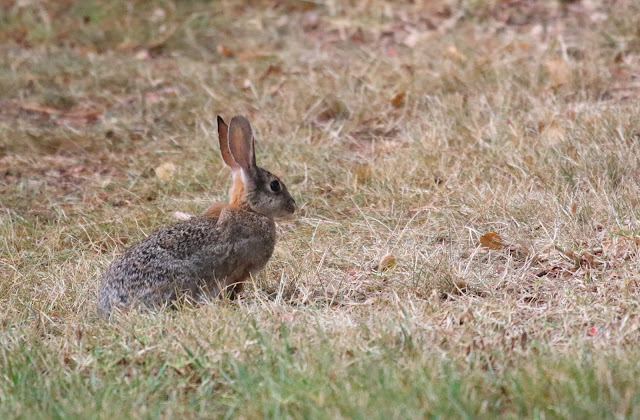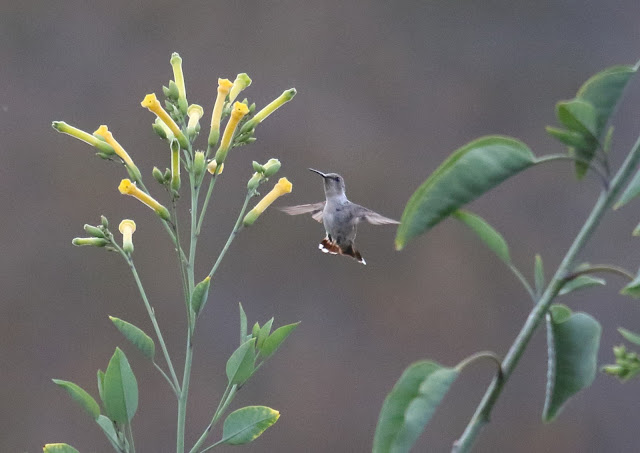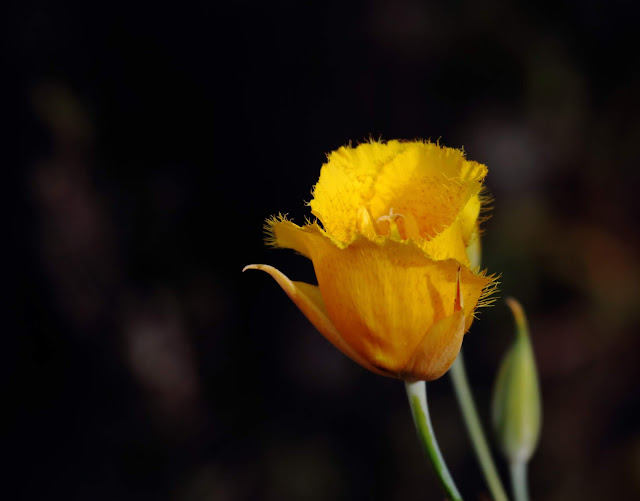My old Canon XTi Rebel camera was state of the art DSLR back in 2006. Combined with Canon's 100-400mm f/4.5-5.6 zoom lens I have obtained many thousands of wonderful bird photos over the years.
However, the camera's focus wasn't very selective--frequently focusing on landscape behind the bird, if it was small in the frame. And though the ISO went up to 1600, ISO 400 was the default, as ISO 800 was very grainy, and ISO 1600 terrible. At 400mm the lens was a bit soft in focus at f/5.6, but better at f/7.1. So, for 12 years I didn't adjust the camera. I shot Aperture Priority at f/7.1, ISO 400, and automatically took whatever shutter speed the light allowed--usually quite slow--hoping the image stabilization would eliminate camera shake.
I haven't had the disposable income in the recent few years to replace it with something better, but I saved up. I mean, it's not the $5000 camera, or even the $3500 camera, but I think my new camera is Canon's best crop-sensor camera, which makes it great for hand-holding the 100-400mm lens. The crop sensor adds 1.6x magnification compared to a camera with a full frame sensor, turning the 400mm lens into 640mm equivalent compared to a film camera.
My new Canon 7D Mark II is a marvel. It shoots at ISO 6400 with less noise than ISO 800 on my old camera, allowing me to shoot in heavy shade or clouds. Though I'll probably not shoot above ISO 3200. I'm keeping the old lens--it's still too expensive to replace it with the new version. The zoom lens still takes sharper shots at f/7.1, but now I can shoot 1/1250 of a second in shade or 1/2000 of a second to stop nearly all bird action, and use AUTO-ISO to get sharp photos without graininess--and at 10 frames per second!
On June 15, 2018 I went to Dixon Lake to try it out in various shooting modes.
 |
| So, 6:17 am on an overcast morning, at least an hour (maybe 2) earlier than I could attempt shooting with my old camera. 1/500 sec., f/5.6, ISO 4000. Not grainy. Not razor sharp, but sharp enough. Black Phoebe. |
 |
| I tried back-button focus to hold focus and recompose off-center. It worked well. However, I am strongly left-eye-dominant. I just can't "see" looking through the viewfinder with my right eye. Thus, looking through the viewfinder with my left eye puts my thumb on the back button and a big thumb knuckle smear on my glasses. I've tried--but I went back to half-press shutter focus. I can still program the back buttons for 5 seconds of focus and exposure lock and accomplish the same thing for a cooperative subject... and keep my fingers off my glasses lens. Desert Cottontail. |
 |
| It was still cloudy at 7:32 am. The wings aren't quite frozen at 1/1250 sec., f/7.1, ISO 2000. Tree tobacco attracts Anna's Hummingbird. |
 |
| Mariposa Lily? My wildflower identification skills are non-existent. But I shot this from 2 meters at 400mm, 1/640, f/7.1, ISO 250. Who needs a macro lens? |
 |
| Chamise blooms. 1/1600, f/7.1, ISO 2000 at 100mm. Any time I shoot at less than 400mm the exposure and sharpness are great. |
 |
| 1/1600, f/7.1, ISO 2500 @360mm. California Scrub-Jay at close range. |
 |
| Fence Lizard. 1/1600, f/7.1, ISO 2500 @200mm. |
 |
| This White-breasted Nuthatch was taking a bath on this garbage can lid that was hit by the irrigation sprinkler. I could never have frozen this twitchy bird with my old camera. 1/1250, f/7.1, ISO 800. |
 |
| This House Finch on its nest under the picnic shelter roof took some work. It was very dark. I went to all Manual. 1/250, f/6.3, ISO 6400. |










No comments:
Post a Comment
I really want to hear from you! I've changed settings (again) in order to try to make commenting easier without opening it up to spammers. Please note, however, that comments to posts older than 14 days will be moderated. Thank you.